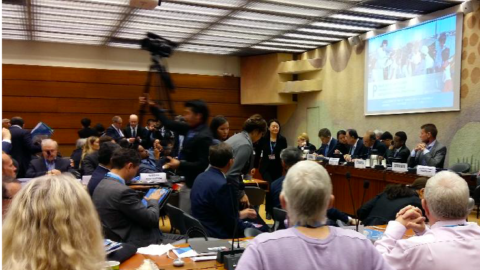
Global Action Plan for Healthy Lives and Well-being for All: a commitment to accelerating together
- This global action plan was initiated by Germany and Norway but founded by a cluster of multilateral agencies, focused on implementation of SDG-3. See the full document or the summary for more information.
- Primary driver: the sharp bend in the trend-line needed if the indicators for SDG-3 are to be achieved. For example an estimated 800 million in the WHO SEARO region are vulnerable to severe financial stress from out-of-pocket health expenditure.
- In the bottom group of less developed countries, health expenditure is estimated to be around 10% of what it needs to be by 2030 to achieve SDG-3, a gap of $180b. A World Bank presentation suggested the major factors to change this picture will be:
- shift of country expenditure from lower priority items
- investment in innovation
- doubling of health-related aid
- The key task during current consultation phase (till September 2019) is to identify accelerators – joint actions that are expected to accelerate progress and remove obstacles
- Presentations from Ghana, Colombia and Nepal highlighted some of the challenges:
- Sustaining achievement beyond the initial burst of enthusiasm and funding
- Inequality, so focusing on median will not be good enough: disaggregated data is needed
- Effective social protection (eg health insurance) systems
- Weak HR capacity
- Political structural decisions (eg Nepal) that makes some indicators go backwards
- Inadequate data and data collection
- There is a representative civil society advisory group which calls for clear communication and consultancy and reminds that civil society will have a crucial role when it comes to implementation.